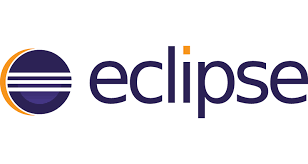How to Master Source Code Editor for Web Development
As web developers, we understand the importance of having the right tools to create and design our websites. One of the essential tools is the source code editor. It is where we write, edit, and debug our code. With so many options available in the market, it can be overwhelming to choose the right one that fits our needs.
In this article, we will explore the features of a source code editor and guide you on how to master it for web development.
- Understanding the Features of a Source Code Editor
A source code editor is a software application that allows developers to write and edit code for creating websites, web applications, and software programs. It provides essential features such as syntax highlighting, auto-completion, code folding, debugging tools, and plugins/extensions.
Syntax highlighting is a feature that highlights different elements of your code, such as keywords, comments, and strings, with different colors, making it easier to read and understand.
Auto-completion is a feature that suggests code snippets or words as you type, saving you time and effort in writing repetitive code.
Code folding is a feature that enables you to collapse and expand sections of your code, allowing you to focus on specific parts of your code without distractions.
Debugging tools are features that help you find and fix errors in your code, such as breakpoints, call stacks, and console logs.
Plugins/extensions are add-ons that enhance the functionality of your source code editor, such as integrations with version control systems, liters, and code formatters.
- Choosing the Right Source Code Editor
Choosing the right source code editor depends on your personal preference, project requirements, and budget. Here are some of the most popular source code editors in the market:
- Visual Studio Code: It is a free and open-source source code editor developed by Microsoft. It offers a wide range of features, including Git integration, debugging tools, and a massive library of extensions.
- Sublime Text: It is a lightweight and fast source code editor with a minimalist design. It supports multiple selections, split editing, and customizability through plugins.
- Atom: It is a free and open-source source code editor developed by GitHub. It offers a sleek user interface, a built-in package manager, and community-driven plugins.
- Notepad++: It is a free and open-source source code editor for Windows. It supports various programming languages, syntax highlighting, and macro recording.
- Mastering the Source Code Editor for Web Development
Mastering the source code editor takes time and practice. Here are some tips to help you get started:
- Customize your editor: Set up your editor with the themes, fonts, and plugins that suit your style and workflow. Experiment with different settings until you find the one that works best for you.
- Learn keyboard shortcuts: Keyboard shortcuts can save you time and boost your productivity. Start with the essential ones, such as copy, paste, undo, and redo, and gradually learn more advanced ones as you go.
- Use code snippets: Code snippets are reusable pieces of code that you can insert into your project quickly. They can help you avoid writing repetitive code and speed up your development process.
- Practice debugging: Debugging is an essential skill for any developer. Learn how to use the debugging tools in your source code editor to find and fix errors in your code.
- Read the documentation: Always refer to the documentation of the programming language or framework you are using. It can help you understand the syntax, APIs, and best practices of the language.
- Conclusion
In conclusion, mastering the source code editor is crucial for web development. It provides essential features such as syntax highlighting, auto-completion, code folding, debugging tools, and plugins/extensions. Choosing the right source code







